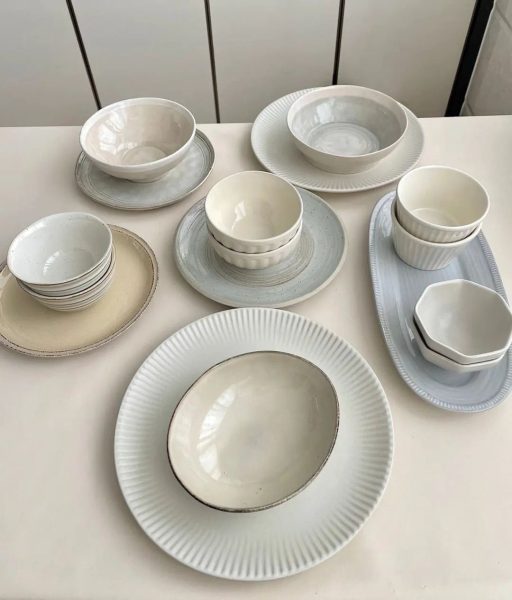
In ceramic glazes, quartz can play the following roles:
1. Control the fluidity of the glaze: High quartz content can reduce the fluidity of the glaze and prevent the glaze from losing from the vessel.
2. Increase the transparency of the glaze: Quartz can make the glaze more transparent.
3. Control the shrinkage of the glaze: an appropriate amount of quartz can control the shrinkage of the glaze to avoid cracking caused by the mismatch between the glaze and the body.
In ceramic blanks, quartz can play the following roles:
1. Control the shrinkage of the green body: an appropriate amount of quartz can control the shrinkage of the green body and prevent the green body from deforming or cracking.
2. Increase the strength of the green body: Quartz can enhance the strength and hardness of the green body, making it more wear-resistant and durable.
What is the effect of quartz on the expansion coefficient of glaze? How does the expansion coefficient of the glaze change when the content of quartz increases?
An increase in the content of quartz will increase the expansion coefficient of the glaze, because the thermal expansion coefficient of quartz is small, and the quartz particles in the glaze will form pores, resulting in an increase in the expansion coefficient of the entire glaze layer. Therefore, when preparing ceramics, it is necessary to select a suitable material according to the desired properties of the glaze and the content of quartz.
When adjusting antique glaze, glazed tile glaze or full polished glaze, what should be paid attention to when adding quartz?
When adding quartz to antique glaze, glazed tile glaze or full polish glaze, you need to pay attention to the following points:
1. The amount of quartz added should be controlled within a certain range, too much or too little will affect the properties of the glaze layer.
2. Quartz powder should be fully mixed with other glazes to ensure the uniformity of the glaze.
3. Pay attention to the fluidity of the quartz glaze when heating, to avoid excessive flow of the glaze layer, which will affect the quality of the glaze layer.
4. It is necessary to adjust the amount of quartz added and the particle size according to the material and shape of the porcelain or pottery used to achieve the best effect.
5. For antique glaze and glazed tile glaze, the transparency and color of the glaze layer also need to be considered, so the amount and quality of quartz added also need to be adjusted according to these factors.
What is the relationship between quartz and crystal?
Quartz and crystal are related. In fact, crystal is a special form containing highly pure quartz. Quartz is a ubiquitous mineral, and crystal is quartz with a special crystal structure and appearance. Crystals can be found in nature or they can be synthesized artificially. Due to its transparency and beautiful appearance, crystals are widely used in jewelry, decorations and industrial applications.
